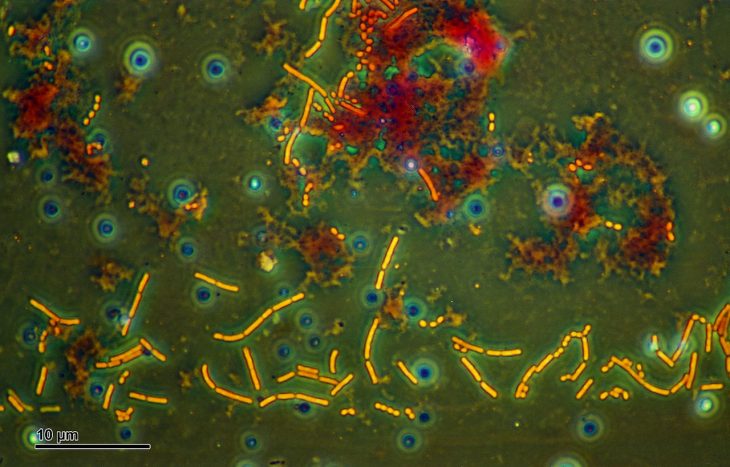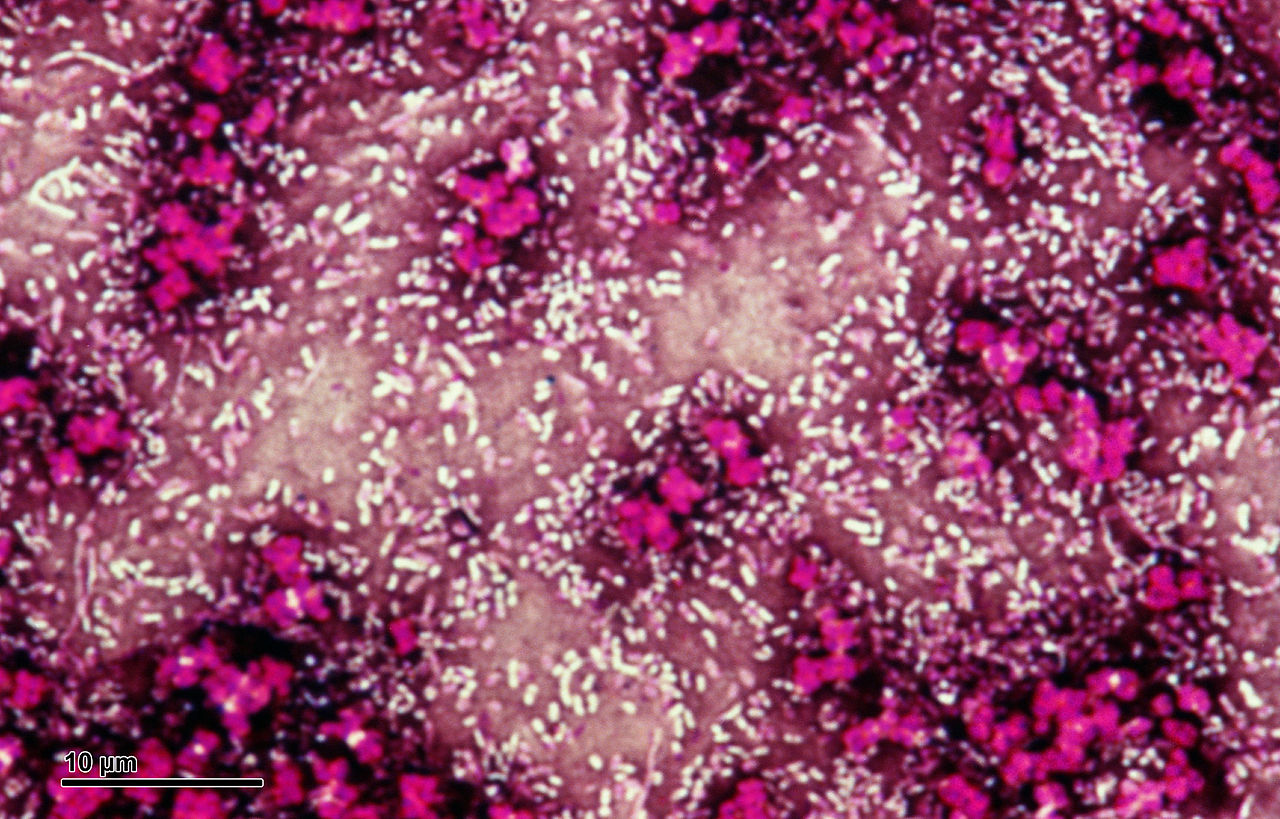
Eubacteria, also known as true bacteria, are a diverse group of microorganisms that play essential roles in our world. They are found almost everywhere, from the depths of the ocean to the soil beneath our feet. In this article, we will delve into 19 captivating facts about Eubacteria that will leave you amazed at their remarkable abilities and contributions.
Eubacteria Abound in Nature
Eubacteria are incredibly abundant in nature. Estimates suggest that a single teaspoon of soil can contain up to one billion bacterial cells. Such prevalence demonstrates their significance in the ecological balance of our planet.
Shapes Galore
These microorganisms exhibit various shapes, ranging from spherical (cocci) to rod-shaped (bacilli) and spiral (spirilla). The diverse forms of Eubacteria contribute to their adaptability and survival in different environments.
Essential Decomposers
Eubacteria play a vital role in the ecosystem as decomposers. They break down organic matter, such as dead plants and animals, into simpler compounds, facilitating nutrient recycling and maintaining the health of the environment.
Ancient Origins
Eubacteria are among the oldest organisms on Earth, with evidence of their existence dating back over 3.5 billion years. Their longevity and resilience speak to their evolutionary success.
Oxygen Producers
Many species of Eubacteria are photosynthetic, meaning they possess the ability to convert light energy into chemical energy, while releasing oxygen as a byproduct. This process contributes significantly to the oxygen levels in the Earth’s atmosphere.
Diverse Habitats
Eubacteria inhabit an astonishing array of environments, including extreme ones. From hot springs and deep-sea hydrothermal vents to frozen tundras and acidic soils, these microorganisms have proven their adaptability and survival skills.
Bacterial Symbiosis
Eubacteria are known for their symbiotic relationships with various organisms. For example, the bacteria in our intestines aid in digestion and provide essential nutrients. Other symbiotic relationships involve nitrogen-fixing bacteria in plant roots, benefiting both the bacteria and the plants.
Antibiotic Production
Some Eubacteria have the remarkable ability to produce antibiotics. Streptomyces, a genus of bacteria, is responsible for producing a significant portion of the antibiotics used in medicine today.
Genetic Diversity
The genetic diversity within Eubacteria is staggering. Their genetic material can range from a few hundred thousand base pairs to over twenty million base pairs, allowing for an extraordinary range of characteristics and adaptations.
Biofilm Formation
Eubacteria are skilled at forming biofilms, which are complex communities of bacteria attached to surfaces. Biofilms can be found in various settings, including dental plaque and the slimy layers covering rocks in rivers.

Nitrogen Cycling
Certain Eubacteria possess the unique ability to convert atmospheric nitrogen into a form that can be utilized by plants. This nitrogen fixation process is crucial for maintaining soil fertility and supporting plant growth.
Pathogenic Potential
While most Eubacteria are harmless or even beneficial, some species have pathogenic traits and can cause infections and diseases in humans, animals, and plants. Understanding their pathogenic mechanisms is essential for developing effective treatments.
Bioremediation Superstars
Eubacteria are at the forefront of bioremediation efforts. Their ability to break down toxic substances, such as oil spills and pollutants, makes them valuable tools in environmental cleanup and restoration.
Ancient Eubacteria in Your Fridge
Ever heard of yogurt or sauerkraut? These fermented foods are made with the help of lactic acid bacteria, a type of Eubacteria that has been used by humans for thousands of years to preserve and enhance the flavor of various food products.
Flagella for Movement
Some Eubacteria possess whip-like appendages called flagella, which allow them to move in liquid environments. This motility enables them to seek out favorable conditions for growth and survival.
Endospore Formation
When faced with unfavorable conditions, certain Eubacteria can form endospores, protective structures that enable them to survive harsh environments. Endospores can withstand extreme temperatures, droughts, and even exposure to radiation.
Versatile Metabolism
Eubacteria exhibit an astonishing metabolic versatility. They can obtain energy through various means, including fermentation, respiration, and photosynthesis, showcasing their adaptability to different energy sources.
Reproduction in Full Swing
Eubacteria reproduce through binary fission, a process where a single bacterium divides into two identical daughter cells. This rapid and efficient method of reproduction allows for exponential growth of bacterial populations.
Contributions to Human Health
Eubacteria have made significant contributions to human health. They have been harnessed for the production of vaccines, insulin, and other essential pharmaceuticals, revolutionizing medicine and saving countless lives.
Conclusion
Eubacteria are extraordinary microorganisms that shape the world we live in. From their abundance in nature to their diverse habitats and remarkable capabilities, these bacteria continue to surprise and intrigue scientists and enthusiasts alike. By understanding their fascinating characteristics, we gain a deeper appreciation for the vital roles they play in our lives and the environment.
Remember, the next time you take a stroll through a forest or enjoy a spoonful of yogurt, Eubacteria may be closer than you think, quietly working their magic behind the scenes.
Frequently Asked Questions (FAQs)
What distinguishes Eubacteria from other bacteria?
Eubacteria, also known as true bacteria, are a major group within the bacterial kingdom. They differ from other bacteria due to their unique genetic and metabolic characteristics.
Are Eubacteria harmful to humans?
While most Eubacteria are harmless or beneficial, some species can cause infections and diseases in humans. However, many harmful Eubacteria can be effectively treated with antibiotics.
How do Eubacteria contribute to the environment?
Eubacteria play crucial roles in the environment as decomposers, nutrient recyclers, and contributors to nitrogen fixation. They also aid in bioremediation efforts, breaking down pollutants and cleaning up contaminated sites.
Can Eubacteria survive in extreme environments?
Yes, Eubacteria have demonstrated remarkable adaptability and can survive in a wide range of extreme environments, such as hot springs, acidic soils, and deep-sea hydrothermal vents.
How do Eubacteria reproduce?
Eubacteria reproduce through a process called binary fission, where a single bacterium divides into two identical daughter cells. This method allows for rapid population growth.
Was this page helpful?
Our commitment to delivering trustworthy and engaging content is at the heart of what we do. Each fact on our site is contributed by real users like you, bringing a wealth of diverse insights and information. To ensure the highest standards of accuracy and reliability, our dedicated editors meticulously review each submission. This process guarantees that the facts we share are not only fascinating but also credible. Trust in our commitment to quality and authenticity as you explore and learn with us.
